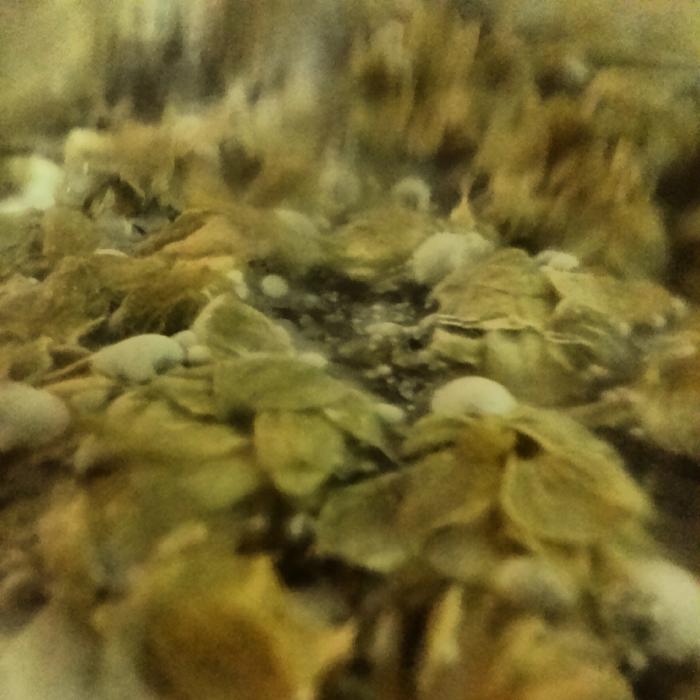andyrobertson
Active Member
- Joined
- Jun 12, 2013
- Messages
- 27
- Reaction score
- 0
Brewed an ipa with fresh hops and a lot of them.. was foing great then dry hopped with dryed hops and now it looks like a crazy... any ideas or suggestions




If you look at the image you'll see that the white material mounds up above the surface it's anchored on in a smooth but felt-like uniformity. That's indicative of a colony structure and not usually seen in yeast out of liquid. My money's on bread mold.Grantman1 said:Hard to tell from the picture if it's mold or some kinda wild yeast, like eastoak said. I'd let it roll for a little til you can figure it out. My guess would be wild yeast from the hops, but if it's mold, have a moment of silence for it then dump it.
Any way can salvage this beer???
Salvage to original recipe? No, but as long as your growth on top doesn't change color (i.e. stays white) you could let it go. It'll be obvious if it's a pellicle or mold cap in a few weeks, and if it's a pellicle you could always purposely let it sour and taste it in a few weeks or months. There's a good chance it'll be revolting but you could get lucky. If you start to see any other color growth on the top though don't risk it, dump the batch. To be honest if it looks like you've got a mold growth I wouldn't even bother trying to figure out what type it is because so many mold species produce toxins (neurological or otherwise). At the point you decide it's mold I'd dump it, toss any of those hops you've got left away, commiserate over a cold one, and brew up another batch. To be safe you should probably consider tossing any plastics/rubbers that touched the beer in it's current state if you've got mold. You'll have to chemically clean the carboy within an inch of it's life too or you may get a repeat batch. Spores are a right PITA to get rid of. Overkill? Maybe, but I work in my local university's prep lab and we tend to overkill everything.Any way can salvage this beer???
Brewed an ipa with fresh hops and a lot of them.. was foing great then dry hopped with dryed hops and now it looks like a crazy... any ideas or suggestions
If you look at the image you'll see that the white material mounds up above the surface it's anchored on in a smooth but felt-like uniformity. That's indicative of a colony structure and not usually seen in yeast out of liquid. My money's on bread mold.
Addendum: If you'll also notice the granular material that's directly on top of the liquid, not forming as a sheet and then thickening but instead as clumps, that's another indication of mold colonies. If you really want to be sure pull a sample of the material. If you're looking at mold you might be able to notice a "fuzzy" surface, indicative of the tendrils fungi use for feeding.
Like I said before your surest way to tell is to scope it. At 400x if it looks like a small round bead it's yeast (possible, but not likely), if it looks like a sand grain it's bacteria (not likely at all), and if it's bigger and gnarly looking with defined structure and fibers it's bread mold.
you have a pellicle which is formed by various yeasts and bacteria.
 Also, racking from under the pellicle is usually a pretty good way to take care of the problem and from personal experience, it rarely returns.
Also, racking from under the pellicle is usually a pretty good way to take care of the problem and from personal experience, it rarely returns.Enter your email address to join: